Toilet Flange Too High – Fix With These Easy Steps
The toilet flange serves as the neck that joins the toilet bowl to the drainpipe of the toilet. Installing it higher than the floor raises dreadful situations, such as a wobbly bowl and water leakage. ... Read more The post Toilet Flange Too High – Fix With These Easy Steps appeared first on Arthitectural.
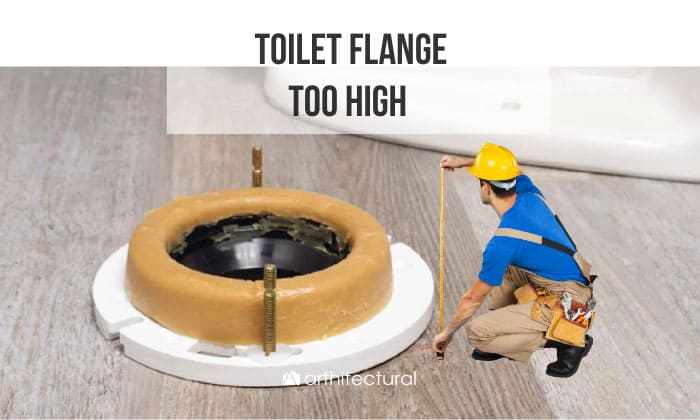

The toilet flange serves as the neck that joins the toilet bowl to the drainpipe of the toilet. Installing it higher than the floor raises dreadful situations, such as a wobbly bowl and water leakage.
The visible indication of toilet flange too high is a large gap between the toilet and the floor. To fix this, you may either shorten the pipe, raise the floor, or fill the gap between the floor and the toilet bowl.
Toilet Flange Height Relative to Floor
The toilet flange should be flush with the floor when installed.
It can also be extended a little bit higher. The maximum height of the toilet flange should be ¼ inch above the floor, and it should not deviate from that.
When you are curious why it must not go higher than this, it is because the toilet base surface is only ⅝ inch above the floor.
Obviously, when the toilet flange is ½ inch above floor, it leads to a gap between the floor and the toilet base by ⅛ inch.
Now, adding a wax ring to seal the connection between the flange and the toilet hole makes the gap grow higher, leaving you with an off-floor toilet base which brings foreseeable problems in the future.
How to Fix Toilet Flange That is Too High
When the toilet flange is not leveled on the floor, it must be fixed immediately. Here are the different ways to fix it.
Method 1: Fill the Gap
A gap between the floor and the toilet base happens when the toilet waste pipe is too high. The least expensive way to deal with it is to add shim or plywood underneath the toilet base, or fill the gaps with grout or cement to provide extra support to the toilet bowl.
Here are the steps to guide you on securing the toilet bowl in minutes:
1. Use Shim
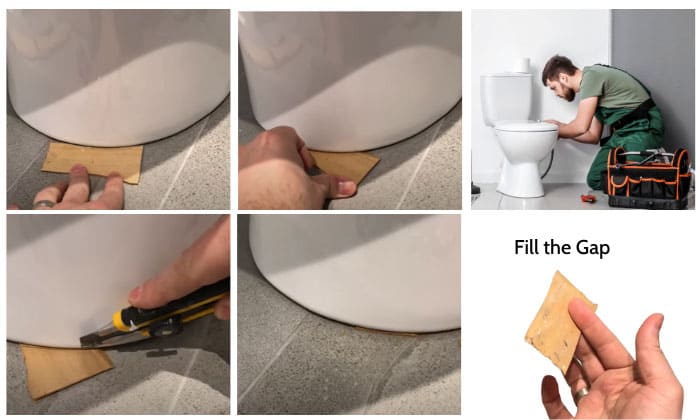
- Insert thin wooden shims underneath the toilet base to secure it from wobbling.
- Press the shim as far as you can until you feel the friction.
- Test the toilet balance by pushing it back and forth and side to side.
- Cut the excess wooden shim using a cutter blade.
- Secure the wooden shim in place with glue.
You may also use the mighty wedge in place with the wooden shim. This is a transparent shim that can easily blend to the color of the toilet and its soft property allows you to trim it down easily.
2. Use Plywood
Plywood is best used when you have a wooden floor. The method below helps you secure the wobbling of the toilet when the toilet flange is not leveled nicely on the floor.
- Close the water source. And flush the toilet to get rid of the water. Suck the remaining water from the toilet tank and bowl using a water sucker. Doing this prevents the water from spilling all over the place.
- Disconnect the water source from the toilet tank before taking off the wobbling toilet bowl from its position.
- Clean the toilet flange and the base of the toilet bowl.
- Place the toilet bowl on top of a ⅛ inch plywood and trace the toilet bowl rim on the plywood using a pencil.
- Accurately mark the center of the screw holes on the plywood. This is very important as they will become reference points in the succeeding steps.
- Measure the diameter of the toilet flange and add one centimeter excess.
- On the plywood, mark the center point from one screw point to the other screw point. And then, draw a toilet flange circumference using the measurement you’ve got on step six.
- Cut the hole exclusively for the toilet flange using a saw.
- Cut the shape of the toilet rim.
- Place the cut plywood pattern on the toilet wooden floor and secure it with nails. This way it does not move when you put back the toilet set.
- Place the 3 o’clock and 9 o’clock toilet screws on their position then secure the toilet flange with screws.
- Place a fluid master toilet seal on top of the toilet flange instead of a wax ring.
- Place the toilet set on top of the whole flange and plywood setup. Make sure the 3 and 9 o’clock screws are inserted on the toilet base hole properly.
- Press the toilet set down then place back the knots of the protruding screws. Tighten the knot on the screws to secure the toilet base in place.
- Your toilet should not wobble this time.
3. Use Grout
Grout is a combination of materials in paste texture that is used to fill in crevices and cracks. This is often always present in house renovation. Grout is often used to cover cracks and gaps because it is durable, inexpensive, and easy to apply. Here is how to use it:
- Mix the grout according to the manufacturer’s instructions to form a paste.
- Using a putty knife, apply the grout around the gap between the toilet base and the tiled floor. This creates a great bond between the porcelain toilet and the ceramic tiles.
- Take a wet sponge, squeeze as much water as possible and wipe out the excess grout.
4. Use Cement
Cement can be used to fill-in gaps underneath the toilet base in concrete and tile flooring. When doing this follow the steps on adding grout to the gap.
Method 2: Raise the Floor
1. Using Tiles

When the toilet flange is ⅝ above the floor or higher, the best option is to consider raising the floor. This can be a permanent solution to fix the too high flange.
To do this, you must measure the gap between the floor. This will guide you in choosing the tiles or flooring thickness you need to cover the gap.
You may need to remove the old flooring to allow fillers and the new tiles to be set flush with the toilet base. The toilet base should be leveled on the floor after tile removal and new tiles are installed.
2. Using Self Leveling Cement
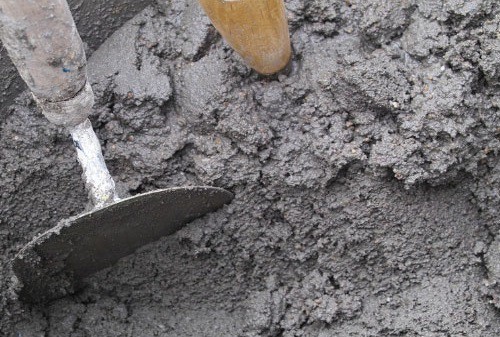
The next choice you can use to raise the floor is self-leveling cement. This is done by placing a primer on the floor, followed by pouring the cement compound mixture to level the uneven floor.
When you want to apply a self-leveling concrete around the toilet flange, wrap a hard object like cardboard around the flange using duct tape.This prevents the cement from pouring onto the flange.
- Toilet flange extender
Sometimes, you may encounter the opposite of the high flange, the low profile toilet flange, after bathroom floor renovation.
The short flange can also lead to leakage because the wax ring is not pressed tightly against the toilet base.
To address this problem, consider using a toilet flange extender to level the flange to the floor. The extender comes at different heights. Choose the right one that suits your needs.
Method 3: Replacing the Flange
The permanent solution to fix a toilet flange that is too high is to look directly into the source of the problem. The major cause of flange being too high are the extended drainage pipe and the toilet flange that is not correctly installed.
The following steps guide you on how to replace flange:
- Close the water source. And drain the water out from the tank and the toilet bowl.
- Disconnect the water source from the toilet tank then loosen the screws holding the toilet bowl in place.
- Clean the surrounding area where the toilet bowl formerly sits and the bottom of the toilet base.
- Stuff rug or tissue paper on the flange to suppress gas from coming out; also to prevent debris from falling onto the pipe.
- Remove the screws pinning the toilet flange.
- With the use of a reciprocate saw, cut the toilet flange that is not leveled to the floor from the side.
- Slice the flange sleeve vertically into five parts using the saw for easy chipping. Make sure the saw does not reach the drainpipe.
- Using a chisel and a hammer, chip out the small cut section of the flange sleeve. Tap the chisel lightly with a hammer until the glued flange sleeve comes out from its place.
- Remove the rug or tissue paper placed in the inside of the drainpipe.
- Insert the new toilet flange that fits perfectly on the drainpipe.
- Cover the pipe hole to prevent the foul odor from coming out while you secure the flange with the screws. Place also the two main screws in position to hold the toilet set in place.
- Place back the toilet set and secure it with knots. Now, your toilet should be laid flush with the floor this time.
Risks of Too High Toilet Flange
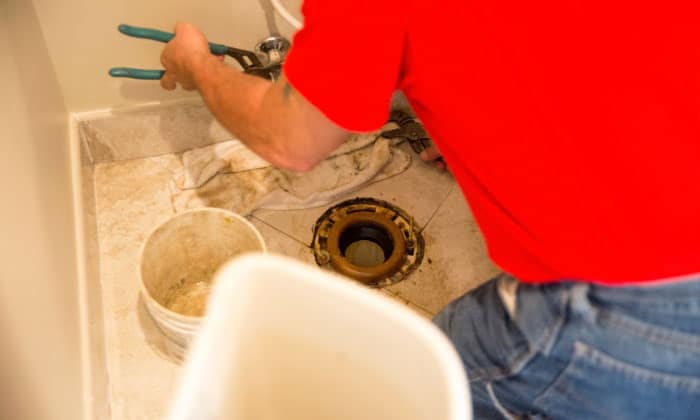
The main functions of the toilet flange in the toilet blueprint are to bridge the toilet hole and the drainage pipe and anchor the toilet bowl securely on the floor to avoid toilet rocking. Once the toilet flange is not properly installed or placed too high, serious problems arise. Some of them are:
1. Health Risk
Toilet flange above the floor tends to compress the wax ring too much, causing it to lose its shape and ability to seal the toilet hole mouth and the flange effectively.
This leads to wastewater leakage onto the bathroom floor and the fuming out of unpleasant odor. The spreading of waste water and constant inhaling of unpleasant gas from the sewer poses serious health risks.
2. Accidence
As small as it is, the toilet flange can make the toilet bowl unstable when installed too high from the floor. The weight distribution is off balance which causes it to tip forward and backward or lean to the sides.
The wobbling or sudden tipping of the toilet bowl creates an unsafe environment for the elderly and kids who cannot balance themselves.
Frequently Asked Questions
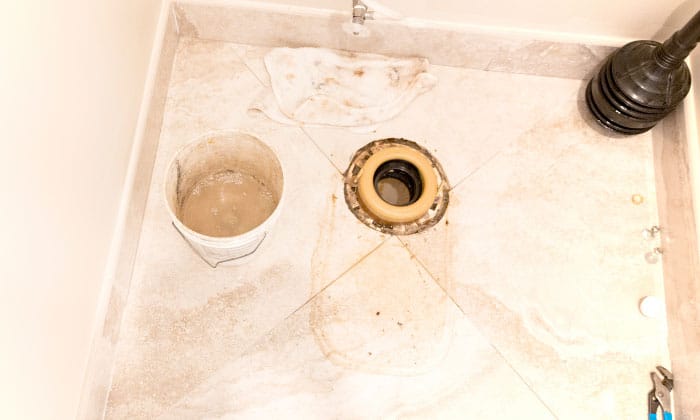
How do I know if my flange is too high?
You know that the flange is too high when there is a noticeable gap underneath the toilet base, the toilet wobbles, or there is a rocking sound every time you sit on the bowl.
How high can a toilet flange be off the floor?
The general rule is that a toilet flange should be ¼ inch above the floor. When it is beyond that, there is a great tendency for the toilet base to be raised slightly above the floor.
Conclusion
Toilet flange height plays a critical role in the toilet’s overall functionality and aesthetic appearance. Installing it the right way prevents plumbing issues in the future. Also, fixing any flange problem that arises early would save you from experiencing the risks mentioned above.
Steps to fix the toilet flange too high should give you another helpful hack to use whenever you encounter a toilet flange malfunction.
The post Toilet Flange Too High – Fix With These Easy Steps appeared first on Arthitectural.
